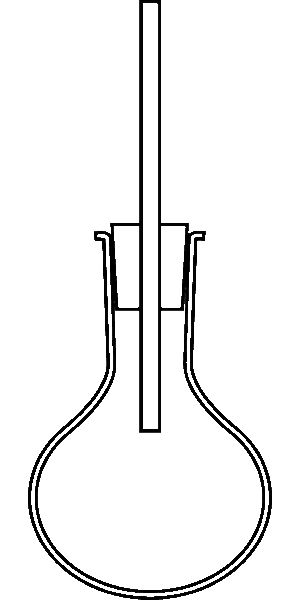The global scientific community's linguistic diversity presents both benefits and challenges, especially regarding Laboratory Reports and Scientific Data. While it enriches collaboration, language barriers hinder accessibility and effective communication. To overcome this, authors are advised to use professional translation services or collaborate with multilingual peers for accurate cross-lingual representation of their research. Standardized terminology, visual aids, and peer review by native speakers further enhance understanding. The future trend leans towards a standardized single language for global submissions, aiming to break down linguistic barriers and foster seamless collaboration in scientific discourse.
In today’s globalized scientific landscape, the submission of laboratory reports and scientific data transcending linguistic boundaries is becoming increasingly essential. The Global Scientific Community embraces diverse languages, yet language barriers pose significant challenges in research sharing. This article delves into the complexities of these barriers, highlighting their impact on international collaboration. We explore the benefits of accepting multilingual content, offer best practices for effective communication, and discuss future trends aiming to foster a universally accepted scientific language.
- The Global Scientific Community and Language Diversity
- Challenges of Language Barriers in Research Submission
- Benefits of Accepting Multilingual Reports and Data
- Best Practices for Effective Multilingual Scientific Communication
- Future Trends: Embracing Universal Language Acceptance
The Global Scientific Community and Language Diversity
The global scientific community is a vibrant tapestry woven with threads from countless cultures and languages. This diversity enriches scientific discourse, fostering innovation and progress. When it comes to sharing knowledge and insights through laboratory reports and scientific data, language plays a pivotal role. Researchers from various backgrounds must convey complex information accurately, ensuring global accessibility and collaboration.
Language diversity in the scientific realm presents both opportunities and challenges. On one hand, translating and interpreting laboratory reports and data across languages enable scientists worldwide to collaborate effectively. It breaks down geographical barriers, fostering international partnerships and enabling the exchange of groundbreaking discoveries. On the other hand, maintaining precision and clarity during translation is crucial for avoiding misinterpretations that could impact research integrity. Standardized protocols and accessible translation services are essential tools to navigate this intricate landscape, facilitating seamless communication within the global scientific community.
Challenges of Language Barriers in Research Submission
In today’s global scientific community, researchers often face significant challenges when submitting their laboratory reports and scientific data due to language barriers. With research being conducted and published in numerous languages, ensuring clear communication across linguistic divides is essential for effective collaboration and knowledge dissemination. This issue can lead to delays in peer review processes, hinder interdisciplinary work, and create a less accessible scientific landscape.
When researchers from different linguistic backgrounds submit their findings, translating technical terms accurately becomes crucial. Inaccurate translations may result in misinterpretations, affecting the quality of research assessment and potentially leading to significant errors in subsequent studies that rely on these data. To overcome these challenges, authors must invest time in professional translation services or collaborate with multilingual peers to ensure their laboratory reports and scientific data are accessible and accurately represented in the chosen target language(s).
Benefits of Accepting Multilingual Reports and Data
In today’s global scientific community, the acceptance of laboratory reports and scientific data in multiple languages is a significant step towards fostering inclusivity and collaboration. This practice benefits researchers from diverse linguistic backgrounds, enabling them to contribute their findings seamlessly. When scientific knowledge is shared across different languages, it widens the scope of research, ensuring that no language barrier impedes progress. It allows for a rich exchange of ideas, methodologies, and results, enhancing the diversity and depth of scientific discourse.
Multilingual reporting also promotes accessibility. Many groundbreaking discoveries are made in regions where English may not be the primary language. By accepting reports in their native tongues, research institutions can make these contributions readily available to scientists worldwide, accelerating global advancements. This approach ensures that valuable data and insights are not confined to specific linguistic groups, encouraging a more inclusive scientific landscape.
Best Practices for Effective Multilingual Scientific Communication
Effective multilingual scientific communication is paramount when submitting laboratory reports and scientific data. To ensure clarity and precision, it’s crucial to translate documents using professional linguists familiar with both the source and target languages. Standardization of terminology across languages is essential to maintain consistency in reporting. This involves leveraging well-established glossaries and databases that align scientific terms, ensuring equivalent meanings across different linguistic contexts.
Additionally, context-specific adaptation should be considered to convey nuances accurately. Visual aids like diagrams, graphs, and tables often transcend language barriers, enhancing the comprehension of complex data. Employing native speakers for peer review can significantly improve readability and ensure the translated content resonates with the intended audience. By adhering to these best practices, researchers can effectively communicate their findings, fostering global collaboration and advancement in their fields.
Future Trends: Embracing Universal Language Acceptance
In the rapidly evolving landscape of scientific research, the future holds exciting prospects for the universal acceptance of a single language for submitting laboratory reports and scientific data. Currently, researchers across the globe engage in a diverse linguistic tapestry when documenting their findings, often hindering collaboration and data exchange. However, with advancements in technology and increased global cooperation, there is a growing trend towards standardization.
The adoption of a universally accepted language, such as English or a future-proofed variant, promises to streamline communication and enhance accessibility. This shift will not only facilitate faster dissemination of knowledge but also enable researchers from diverse backgrounds to contribute their expertise seamlessly. In terms of laboratory reports and scientific data, this trend signals a more interconnected and collaborative global research community, where language is no longer a barrier to progress.
In conclusion, the global scientific community is increasingly recognizing the importance of embracing multilingual communication in the submission of laboratory reports and scientific data. Overcoming language barriers not only fosters inclusivity but also enriches research through diverse perspectives. By implementing best practices and anticipating future trends, scientific journals and institutions can facilitate seamless multinational collaboration, ultimately accelerating discovery and innovation across languages.
